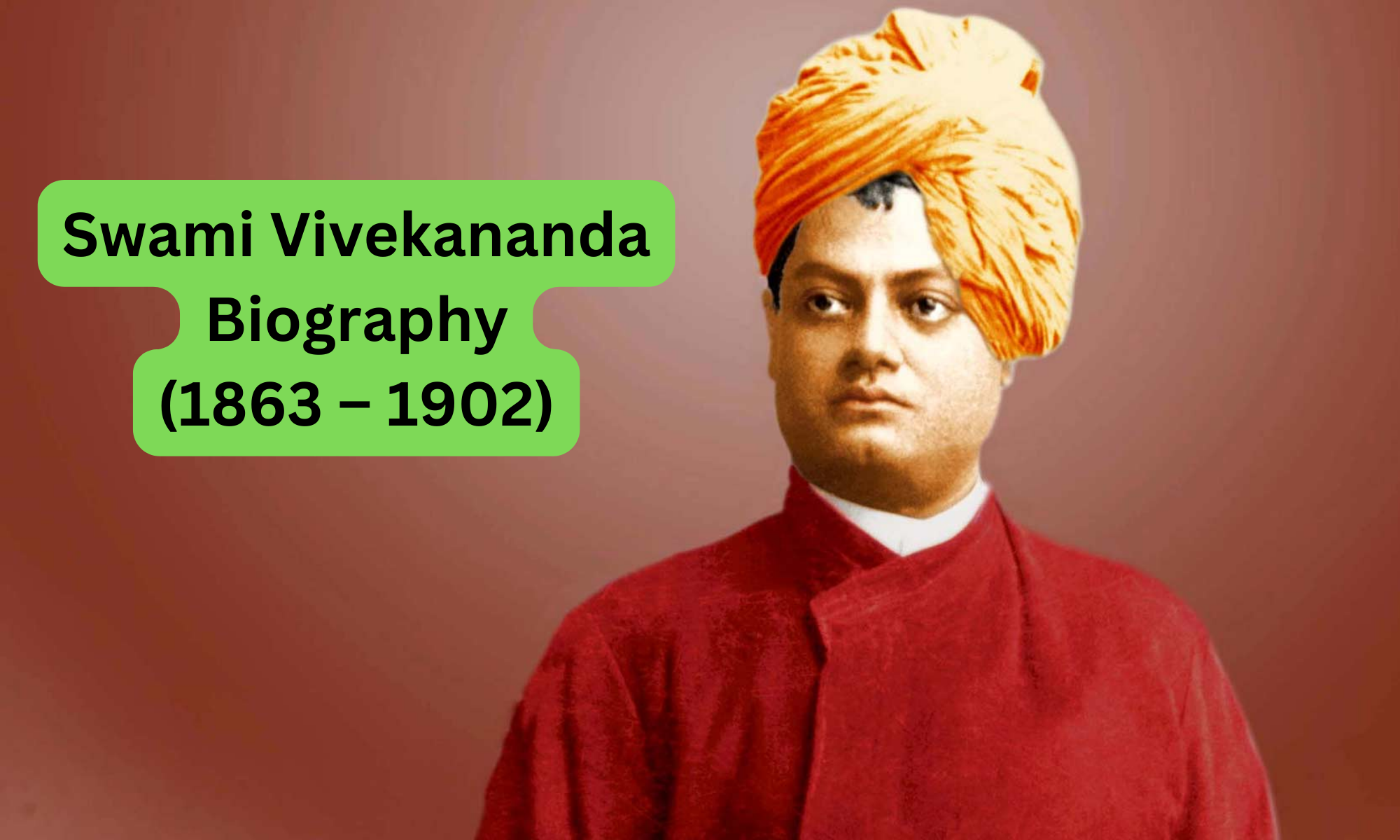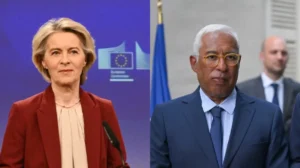Swami Vivekananda Biography
Born Narendranath Datta, Swami Vivekananda (12 January 1863 – 4 July 1902) was an Indian Hindu monk, philosopher, writer, and religious teacher. He was also Ramakrishna’s most important pupil. Swami Vivekananda is credited with promoting interfaith understanding and elevating Hinduism to the position of a significant international religion. Swami Vivekananda was a vital player in the introduction of Vedanta and Yoga to the Western world.
Buy Prime Test Series for all Banking, SSC, Insurance & other exams
After delivering his well-known address at the 1893 Parliament of Religions in Chicago and introducing Hinduism to Americans with the words “Sisters and brothers of America,” Vivekananda gained popularity. Swami Vivekananda made such an effect at the Parliament that he was called “an orator by divine right and unquestionably the greatest figure at the Parliament” by an American publication.
After having great success at the Parliament, Vivekananda continued to spread the fundamental principles of Hindu philosophy by giving hundreds of lectures across the United States, England, and Europe. Swami Vivekananda also founded the Vedanta Societies of New York and San Francisco (now known as the Vedanta Society of Northern California), which served as the cornerstones for Vedanta Societies in the West.
Swami Vivekananda – Key Details
Born: 12 January, 1863
Place of Birth: Kolkata, India
Childhood Name: Narendranath Dutta
Father: Vishwanath Dutta
Mother: Bhuvaneshwari Devi
Education: Calcutta Metropolitan School; Presidency College, Calcutta
Religion: Hinduism
Guru: Ramakrishna
Founder of: Ramakrishna Mission (1897), Ramakrishna Math, Vedanta Society of New York
Philosophy: Advaita Vedanta
Literary works: Raja Yoga (1896), Karma Yoga (1896), Bhakti Yoga (1896), Jnana Yoga, My Master (1901), Lectures from Colombo to Almora (1897)
Death: 4 July, 1902
Place of Death: Belur Math, Belur, Bengal
Memorial: Belur Math. Belur, West Bengal
Adda247 Yearbook 2022 Download PDF
Swami Vivekananda Jayanti 2024
Every year, Swami Vivekananda Jayanti is observed to remember one of India’s finest teachers’ birth. On January 12, 1863, Swami Vivekananda was born. Swami Vivekananda followed Swami Ramkrishna Paramhansa and eventually became a “sanyasi” or monk. Due to the renowned teacher’s faith in the nation’s youth, Swami Vivekananda’s birthday is also observed as National Youth Day.
Cricket legend M S Dhoni Releases Autobiography of Prof. K.K. Abdul Gaffar
Swami Vivekananda Birth and Early Life
- On January 12, 1863, during the Makar Sankranti festival, Swami Vivekananda was born as Narendranath Datta into a Bengali family in his ancestral house at 3 Gourmohan Mukherjee Street in Calcutta, the capital of British India.
- Swami Vivekananda was one of nine siblings and came from a conventional family.
- Vishwanath Datta, his father, worked as a lawyer at the Calcutta High Court. Sanskrit and Persian scholar Durgacharan Datta, Narendra’s grandfather, abandoned his family at age 25 to become a monk.
- Bhubaneswari Devi, Swami Vivekananda’s mother, was a devoted housewife.
- Narendra’s father had a progressive, logical outlook, while his mother had a devout temperament, both of which influenced his way of thinking and personality.
From an early age, Swami Vivekananda was interested in spirituality and used to perform meditations in front of pictures of gods like Shiva, Rama, Sita, and Mahavir Hanuman. Swami Vivekananda was enthralled by monks and ascetics who wandered. As a young child, Narendra was naughty and restless, and his parents frequently struggled to keep him under control.
Savitribai Phule Biography, Personal Life, Education and Career
Swami Vivekananda Educational Life
- At the age of eight, Swami Vivekananda joined at the Metropolitan Institution of Ishwar Chandra Vidyasagar, where he attended school until his family relocated to Raipur in 1877.
- Swami Vivekananda was the sole student to achieve first-division marks on the Presidency College admission exam in 1879, following the relocation of his family to Calcutta.
- At the General Assembly’s Institution, Swami Vivekananda studied Western logic, Western philosophy, and European history (now known as the Scottish Church College).
- Swami Vivekananda passed the Fine Arts test in 1881, and in 1884 he earned a Bachelor of Arts degree. David Hume, Immanuel Kant, Johann Gottlieb Fichte, Baruch Spinoza, Georg W. F. Hegel, Arthur Schopenhauer, Auguste Comte, John Stuart Mill, and Charles Darwin were among the authors Narendra examined.
Herbert Spencer’s theory of evolution captivated him, and through correspondence, he translated his book Education (1861) into Bengali. Swami Vivekananda studied Bengali literature and Sanskrit scriptures in addition to Western philosophers.
Narendra Modi Biography, Age, Full Name, Family, Wife, Qualification, Net Worth, Twitter
Foundation of Ramakrishna Math by Swami Vivekananda
Following Ramakrishna’s passing, his followers and admirers ceased helping them. Narendra and the other disciples were forced to move because of unpaid rent. Many of them adopted a Grihastha (family-oriented) way of life when they went back home. In order to accommodate the remaining disciples, Narendra made the decision to renovate a run-down house in Baranagar into a new math (monastery). The Baranagar Math’s rent was modest and was raised by “holy begging.” The math was transformed into the Ramakrishna Math’s first structure, a monastery for the Ramakrishna monastic order. Every day, Narendra and his followers would spend many hours engaging in religious fasting and meditation. Later, Narendra reflected on the monastery’s early years.
Swami Vivekananda Death and Later Life
- On July 4th, 1902, Swami Vivekananda rose early, travelled to the monastery at Belur Math, and engaged in a three-hour meditation session.
- Swami Vivekananda lectured students on the Shukla-Yajur-Veda, Sanskrit grammar, and the yoga philosophy before holding a meeting with colleagues to propose a future Vedic college at the Ramakrishna Math.
- Swami Vivekananda went to his room at 7:00 p.m. and asked that no one bother him; he passed away at 9:20 p.m. while meditating.
- Swami Vivekananda experienced mahasamadhi, according to his followers; a blood vessel burst in his brain was suggested as a potential cause of death.
- Swami Vivekananda’s followers said the rupture was brought on by the piercing of his brahmarandhra during mahasamadhi.
Swami Vivekananda’s prediction that he wouldn’t survive for forty years came true. On the banks of the Ganga in Belur, directly across from where Ramakrishna had been burnt sixteen years before, he was buried with a sandalwood funeral pyre.




 Republic Day 2026: EU Leaders Likely to ...
Republic Day 2026: EU Leaders Likely to ...
 World Braille Day 2026: Significance, Hi...
World Braille Day 2026: Significance, Hi...
 China Commissions a New Missile Destroye...
China Commissions a New Missile Destroye...







